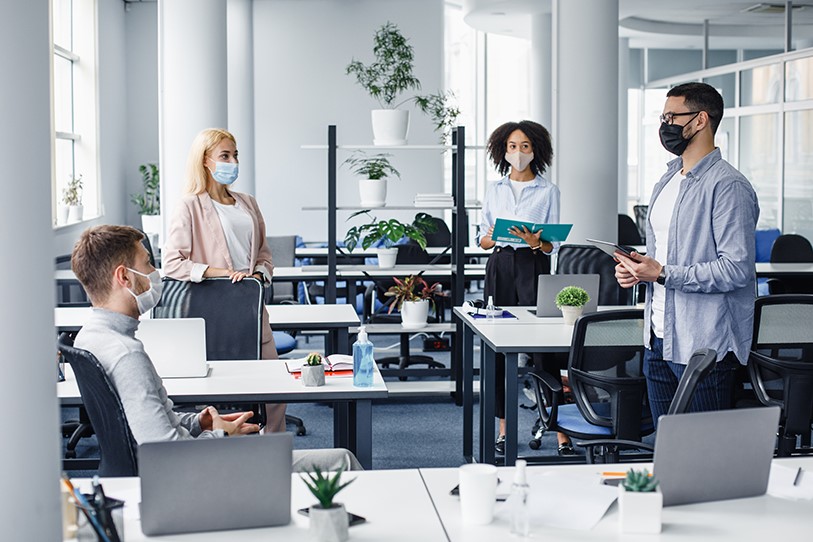Bianca Saad April 1, 2021 HR Watchdog
What COVID-19 safety measures do employers need to have in place before employees return to the workplace from remote work?
Employers who are bringing their employees back to the workplace have several steps and considerations to make.
Written Prevention Program
One major safety component is developing a written COVID-19 Prevention Program, as required under the California Division of Occupational Safety and Health (Cal/OSHA) Emergency Temporary Standards (ETS) that took effect on November 30, 2020.
In creating your written COVID-19 Prevention Program, you will need to address several topics, including but not limited to how you will: communicate your COVID-19 prevention procedures to your employees; identify, evaluate and correct COVID-19 hazards; implement physical distancing and face covering requirements; investigate and respond to COVID-19 cases in the workplace; provide testing to employees who may have been exposed to COVID-19 in the workplace; and exclude COVID-19 cases and exposed employees from the workplace.
Cal/OSHA has made a Model COVID-19 Prevention Program available for employers to use.
COVID-19 Testing
Aside from addressing the topic of testing in the written COVID-19 Prevention Program, employers are required to provide COVID-19 testing for employees who were exposed to COVID-19 at work (additional testing requirements are triggered by “major” or “multiple” outbreaks as defined by the ETS), exclude COVID-19 cases and exposed employees from the workplace (including maintaining pay and benefits), and ensuring specific criteria are met before COVID-19 cases and exposed employees may safely return to work.
Notifications/Reporting
Employers should also be familiar and ready to comply with your various notification and reporting requirements related to COVID-19.
Under AB 685, and under the Cal/OSHA ETS, employers must notify all employees within one business day of learning of a positive case in the workplace. Additionally, employers have obligations to report all positive cases to their workers’ compensation carrier under SB 1159.
Sick Leave
Lastly, part of maintaining a safe and healthy workplace includes allowing employees who are sick or experiencing any COVID-19 symptoms to stay home.
Available leave may include California mandated paid sick leave, leave under the federal Families First Coronavirus Response Act for those employers voluntarily providing it, local paid sick leave or supplemental paid sick leave ordinances, and most recently, California’s newly enacted supplemental paid sick leave law.
Industry-Specific Standards
Keep in mind this is a general overview of some of the highlighted safety measures to have in place. Employers should also check for any industry-specific standards, along with any requirements of their particular local health department.
Bianca Saad, Employment Law Counsel/Subject Matter Expert, CalChamber
